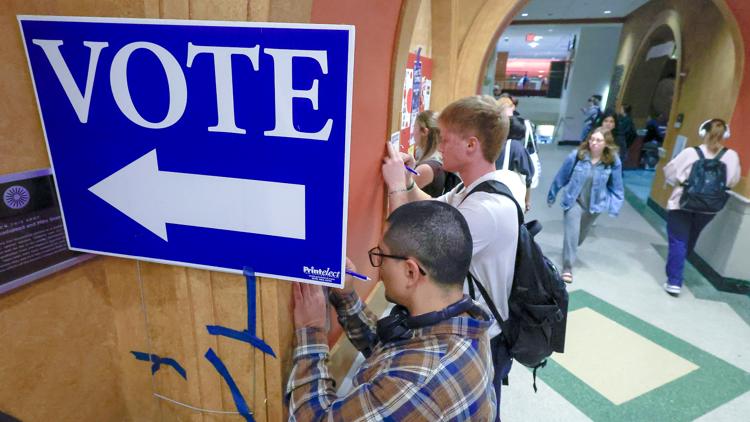WASHINGTON — With former President Donald Trump’s encouragement, Republicans are voting early again, flocking to the polls for in-person voting ahead of Election Day and helping push the national number above 17 million.
The early turnout is breaking records in swing states such as Georgia and North Carolina.
The GOP hopes this surge of early votes will fix a mechanical problem that some in the party blame for costing it the 2020 presidential election and key races in 2022. Campaigns usually want their voters to cast ballots ahead of Election Day so they can focus their resources on getting more marginal supporters to the polls at the last minute.
Republicans excelled at that before Trump turned against early in-person and mail voting in 2020, as he spun wild conspiracies about the process and convinced his supporters to wait until Election Day to cast their ballots. But the party is again pushing its voters to cast their ballots early, and the former president is largely encouraging the change.
“I am telling everyone to vote early,” Trump said on a podcast last week hosted by conservative Dan Bongino, who has widely spread false information about early voting and the 2020 election.
Republicans seem to be responding. In North Carolina, where in 2022 Democrats had an edge of more than 30 percentage points at this stage of early voting, they are ahead by just 2 percentage points this year, according to Associated Press election research. In Nevada, where Democrats for decades relied on a robust early vote to counter the GOP on Election Day, about 6,000 more Republicans than Democrats had actually cast early ballots this year as of Tuesday.
It's unclear what this means for the election, however. The early vote data only reveals whether voters are registered with a party, not who they are voting for, and the early electorate can change from day to day as more people vote early.
The surge in 2020 Democratic early voting was largely a reaction to a pandemic that no longer exists, skewing historic comparisons. And what might seem like demographic trends in the early vote can suddenly disappear once Election Day votes are factored in.
It also is still very early in the voting process. The last of the seven swing states, Wisconsin, kicked off its early voting Tuesday morning, and the 17.4 million voters who already have cast ballots this year represent only about 11% of the number of total ballots in the 2020 presidential election. Parties can run up leads in the early vote and then see them vanish on Election Day because all their supporters have already cast ballots and the other side has not.
“The Democrats are still, as far as I can tell, banking more early votes. It's just less of a disadvantage for Republicans,” said Michael McDonald, a political scientist at the University of Florida who carefully tracks the early vote. But, McDonald cautioned, “we don't know if this is a shifting of furniture yet or an added strength for Republicans.”
One thing is clear — the return to bipartisan early voting has helped bust records. North Carolina and Georgia both reported record turnout on their first day of in-person early voting, despite the destruction caused by Hurricane Helene, and it's spilled over into states that aren't competitive at the presidential level, such as South Carolina, which reported its own record when it opened early voting Monday.
Republicans still seem to have an aversion to mail balloting. They've improved their share of the mail vote in several states but still lag Democrats. That's particularly true in Pennsylvania, the biggest electoral prize among the seven swing states and one that does not have a traditional early in-person voting option.
Democrats there have sent in about 350,000 more mail ballots than Republicans as of Tuesday. But the GOP is making up ground by voting early in-person in most competitive states.
Nonetheless, years of sowing conspiracy theories about early and mail voting have taken a toll on the conservative electorate. At Elon Musk's first solo event in support of Trump last week, he encouraged the crowd to vote early, an entreaty that some in the audience responded to by shouting back, “Why?”
Even with those reservations, some analysts said Republicans would rather have an early vote parity than not.
John Couvillon, a Louisiana pollster who usually works for the GOP and carefully tracks the early vote, noted that Democrats have dominated the early vote during recent election cycles. Their current position, Couvillon said, “is the equivalent of being down three touchdowns at halftime and thinking you can score four touchdowns in the second half.”
Tom Bonier, a Democratic data analyst, contended that everyone expected Republicans to return to early voting and the pandemic-inspired gaps to close. He said he's not concerned.
“I'm impressed the Democratic numbers are as strong as they are,” he said.
The main takeaway, Bonier said, is that the high rates of voting show an enthusiastic electorate on both sides.
“If either side thought the other side would stay home this election, that's obviously not the case,” he said.



